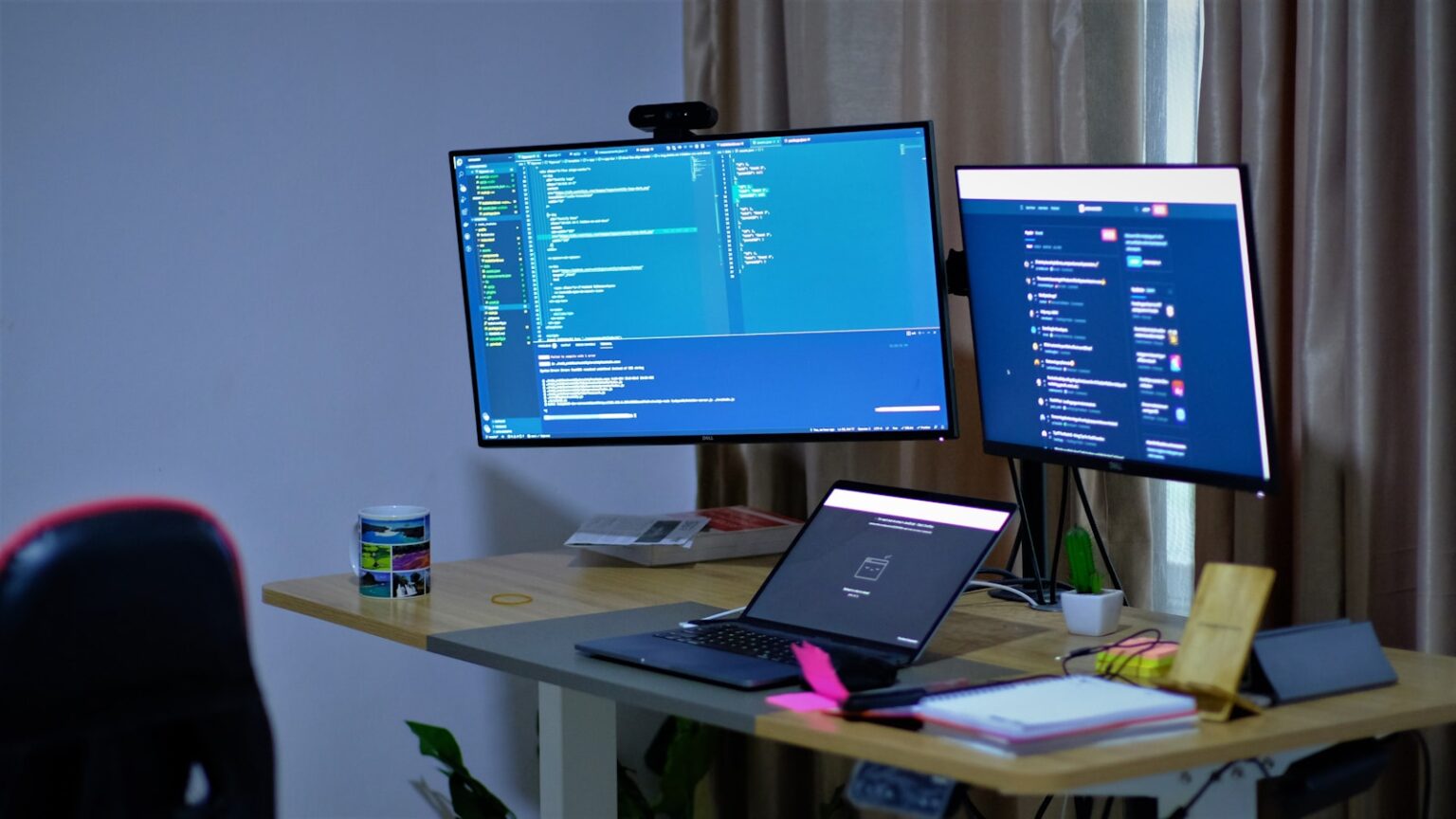Welcome! Today, we’re exploring the role of a Cyber Security Engineer. It’s a mix of being a digital detective, architect, and emergency responder. Let’s dive into what a Cyber Security Engineer really does all day.
Imagine your company as a castle with valuable treasures like customer data and financial records. A Cyber Security Engineer designs the castle’s defenses. They plan where to build walls, how high, and where to place guards. In our digital world, this castle is a company’s computer network, and the treasures are its data.
What is a Cyber Security Engineer at a High Level?
A Cyber Security Engineer protects computer systems and networks from cyber threats. Their main goal is to prevent data breaches, attacks, and unauthorized access. They are proactive, building a secure environment from the start.
This role is different from a Security Analyst, who monitors for attacks. The engineer is the architect and builder, while the analyst is the guard watching the cameras.
Their work focuses on three key concepts of the CIA Triad:
- Confidentiality: Ensuring data is only accessible to authorized individuals. It’s like a secret diary. Only you should be able to read it.
- Integrity: Making sure data is accurate and trustworthy. The message sent is the message received, with no changes.
- Availability: Ensuring systems and data are available to authorized users when needed. The website should be online; files should be accessible.
Every task an engineer performs is designed to uphold one or more of these principles. This is the foundation of any good Cyber Security Engineer job description.
The Day-to-Day: Key Responsibilities and Duties
So, what does an engineer actually do? Their job isn’t one single task. It’s a collection of many different responsibilities. Let’s look at the most common ones you’ll find in a job description.
1. Designing and Implementing Secure Network Solutions
This is the “architect” part of the job. Before a new system or application is launched, the security engineer gets involved. They ensure security is baked in from the start, not bolted on as an afterthought. This is a concept called “Security by Design.”
It’s much easier and cheaper to build a house with a strong foundation and alarm system in the plans than it is to add them after the house is already built. The same is true for software and networks. The engineer will design security controls, like firewalls, intrusion detection systems, and secure configurations for servers and routers.
A Little Story: The E-Commerce Launch
A company was about to launch a new e-commerce website. Before it went live, Sarah, the Cyber Security Engineer, was brought in. She reviewed the architecture. She noticed that the part of the system that processed credit cards was not properly isolated from the part that ran the blog. She explained, “If a hacker finds a simple weakness in our blog software, they could potentially pivot and access our customers’ credit card information. That would be a disaster.” She then redesigned the network to create a strong, digital wall between the two systems. The launch went smoothly, and a crisis was avoided before it ever had a chance to happen. That is the power of proactive engineering.
2. Vulnerability Assessment and Penetration Testing
You can’t protect against a threat you don’t know you have. A huge part of the job is actively looking for weaknesses. This is where the engineer puts on their “ethical hacker” hat.
- Vulnerability Assessment: This involves using automated tools to scan systems and networks for known weaknesses. It’s like checking every door and window of your castle to see if any are unlocked.
- Penetration Testing (Pen Testing): This is more hands-on. The engineer actively tries to break into the systems, just like a real attacker would. Of course, they do this with permission and strict rules. The goal is to find holes before the bad guys do.
This is one of the most exciting parts of the job for many engineers. It’s a constant challenge to think like an adversary and find creative ways to bypass the very defenses you may have helped build.
3. Monitoring, Threat Detection, and Incident Response
No system is 100% perfect. Despite the best designs, attacks can happen. This is where the engineer becomes a digital firefighter.
- Monitoring: They analyze logs and alerts from various security tools. They look for suspicious patterns. For example, why is someone from a foreign country trying to log into the CEO’s account at 3 AM?
- Incident Response: When a security breach occurs, the engineer is a key player on the response team. They work to:
- Contain the threat: Isolate the infected computers to stop the attack from spreading.
- Eradicate the threat: Find and remove the malware or the attacker from the network.
- Recover: Restore systems from backups and get everything back to normal.
- Learn: Figure out how the attack happened and put new defenses in place to prevent it from happening again.
As the famous security expert Bruce Schneier says, “If you think technology can solve your security problems, then you don’t understand the problems and you don’t understand the technology.” This highlights that tools are just one part of the equation. The engineer’s brain is the most important tool.
4. Managing and Maintaining Security Tools
A Cyber Security Engineer is a master of tools. They are responsible for configuring, updating, and fine-tuning the company’s security technology stack. This is a critical, ongoing task.
| Security Tool | Simple Explanation (The Castle Analogy) |
|---|---|
| Firewall | The main gate and walls of the castle. It controls who and what can come in or go out. |
| Intrusion Detection/Prevention System (IDS/IPS) | The guards on the walls. They spot suspicious activity (IDS) and can actively stop it (IPS). |
| Security Information and Event Management (SIEM) | The central command room where all reports from all guards and patrols are collected and analyzed in one place. |
| Antivirus / Anti-Malware | Specialized guards who can identify and neutralize known spies and saboteurs (viruses). |
| Encryption Tools | The secret code used to write messages, so even if a message is intercepted, no one can read it. |
5. Developing Security Policies and Procedures
It’s not all about technology. It’s also about people. An engineer helps create the security rulebook for the company. This includes things like:
- Password Policy: How long and complex passwords must be.
- Acceptable Use Policy: What employees can and cannot do on company computers.
- Data Handling Policy: How to handle sensitive information safely.
Clear policies are essential for building a strong security culture.
The Skills You Need: What to Put on Your Resume
To succeed in this role, you need a mix of technical and people skills. A good Cyber Security Engineer Job Description will list both.
Technical Skills (Hard Skills)
- Networking: Understanding the internet is key. You need to know about TCP/IP, DNS, HTTP, and more. Knowing how networks work is essential for protection.
- Operating Systems: Knowledge of Windows, Linux, and sometimes macOS is vital. You must know how to secure and audit them.
- Security Tools: Experience with various tools is a must.
- Cloud Security: With more companies moving to the cloud, securing these environments is critical.
- Scripting and Automation: Knowing scripting languages like Python, Bash, or PowerShell is important. It helps automate tasks and build tools.
- Cryptography: Understanding encryption is key to protecting data at rest and in transit.
Soft Skills (The People Part)
These skills are just as important as technical ones.
- Problem-Solving: You act like a detective. You must solve complex problems under pressure.
- Communication: You need to explain technical issues to non-technical people. This includes convincing managers about security measures.
- Attention to Detail: A small mistake can lead to big problems. You must be very careful.
- Calm Under Pressure: During security incidents, staying calm is key. You should follow the plan and think clearly.
- An Ethical Mindset: This is the most important trait. You will handle powerful tools and sensitive information. You must have a strong moral compass and be completely trustworthy.
Career Paths and Specializations
“Cyber Security Engineer” is often just the beginning. It’s a foundational role that can lead to many specializations. After a few years, an engineer might focus on one area.
An Anecdote: Mark’s Journey
Mark started as a general Cyber Security Engineer. He was good at everything but found a thrill in penetration testing. He loved the “hunt” for vulnerabilities. After a few years, he specialized in ethical hacking. Today, he leads a team that big banks hire to test their security.
His journey started with a broad Cyber Security Engineer job description and evolved into a specialized and rewarding career.
Here are a few common specializations:
- Security Architect: A senior role focused on high-level design. They create the security blueprint for the organization.
- Penetration Tester / Ethical Hacker: Specializes in offensive security, trying to break into systems to find flaws.
- Cloud Security Engineer: Focuses exclusively on securing cloud environments like AWS, Azure, and GCP.
- Application Security (AppSec) Engineer: Works with developers to ensure the code is secure.
- Incident Responder: A specialist who leads the charge when a security breach happens. The first responder of the digital world.
A Sample Cyber Security Engineer Job Description
Let’s put it all together. Here is what a typical job posting for this role might look like. This example condenses everything we’ve talked about into a practical format.
Position: Cyber Security Engineer
Company: Innovatech Solutions Inc.
Location: Remote / New York, NY
Job Summary:
Innovatech is looking for a Cyber Security Engineer to join our team. You’ll protect our systems and data from cyber threats. The right person is a problem solver who loves building secure environments.
Key Responsibilities:
- Design, implement, and manage security controls, including firewalls, IDS/IPS, SIEM, and endpoint protection.
- Conduct regular vulnerability assessments and penetration tests to identify and remediate security weaknesses.
- Monitor network traffic and system logs for signs of malicious activity.
- Lead and participate in incident response activities, including containment, eradication, and recovery.
- Develop and maintain security policies, standards, and procedures.
- Collaborate with IT and development teams to ensure new systems are built with security by design.
- Automate security tasks using scripting languages such as Python or Bash.
Required Qualifications:
- 3+ years of experience in a hands-on cyber security role.
- Strong understanding of networking protocols (TCP/IP, DNS, etc.).
- Experience with Windows and Linux server environments.
- Hands-on experience with security tools like firewalls, SIEM, and vulnerability scanners.
- Excellent problem-solving and analytical skills.
- Bachelor’s degree in Computer Science, Information Security, or a related field, or equivalent experience.
Preferred Qualifications:
- Experience with cloud security (AWS, Azure).
- Professional certifications such as CISSP, Security+, or GIAC.
- Experience with scripting languages (Python preferred).
- Experience with incident response procedures.
Conclusion: The Digital Guardian
The role of a Cyber Security Engineer is more critical today than ever before. They are the guardians of our digital world. They work in the background, often unseen, to keep our information safe and our systems running. It is a challenging, constantly evolving, and incredibly rewarding field.
This deep dive into the Cyber Security Engineer Job Description shows that the role is a blend of technical mastery, creative problem-solving, and a deep sense of responsibility. It’s not just about stopping hackers; it’s about building a foundation of trust in the digital age. For those with a curious mind and a desire to protect, it is one of the most important jobs of the 21st century.
























